Equipment choice, Arrows and Broadheads:
Last month I discussed the topic of choosing the right bow for you. The next step in the core element of equipment choice is arrows and broadheads. There are so many things to consider when choosing arrows and broadheads that I will again just cover the very basics to help you get started. As you research each topic more thoroughly, you will gain a better understanding of how and why to choose the various combinations of arrows and broadheads.
Arrows:
The main thing to remember when choosing your arrow is that there is not one universal arrow for all bows, just like there is not one universal bullet for all rifles. There are hundreds of arrows on the market, but you need to find the one that works with the way your particular bow is set up. Some of the things that come into play are the length of the arrow, spine of the arrow, weight of the arrow, forward of center (FOC), and fletchings. These are a lot of things to take into consideration, but if any one of these variables are incorrect, your accuracy will be greatly effected.
 PIC 1 Rebecca Francis fletching arrows with Arizona EZ fletch, Goat Tuff glue, and Blazer Vanes.
The length of the arrow the most basic factor to determine when setting up a properly balanced arrow. Luckily, any archery shop should be able to help you narrow your choices by referring to a charting system that will give you the correct configurations. The general rule of thumb of achieving your optimal arrow length is ensuring that the arrow is approximately one inch past the arrow rest when your bow is at full draw. Most people want to achieve as much velocity from their arrow as possible by making the arrow as short as they can. However, If the arrow is too short, you are faced with the possibility of the arrow catching behind the rest when you draw and exploding upon release. This is a safety concern not worth risking for the minimal increase in velocity. On the other hand, if the arrow is too long, you are adding unnecessary weight to the arrow which will decrease velocity.
Once the arrow length is determined, you can then consider the spine or stiffness of the arrow. The longer the arrow the more it flexes when it flies, whereas, the shorter the arrow the stiffer it will fly. Again, each arrow manufacturer should have detailed charts that will help you determine the properly spined arrow for your draw weight and length. Generally speaking, you can use an arrow with less spine with less aggressive cams, lighter draw weight, short draw length and lighter tip weight. Whereas, with an arrow with more spine will be necessary for more aggressive cams, heavier draw weight, longer draw length, and heavier tip weight.
[caption id="attachment_161" align="alignnone" width="408"]
PIC 1 Rebecca Francis fletching arrows with Arizona EZ fletch, Goat Tuff glue, and Blazer Vanes.
The length of the arrow the most basic factor to determine when setting up a properly balanced arrow. Luckily, any archery shop should be able to help you narrow your choices by referring to a charting system that will give you the correct configurations. The general rule of thumb of achieving your optimal arrow length is ensuring that the arrow is approximately one inch past the arrow rest when your bow is at full draw. Most people want to achieve as much velocity from their arrow as possible by making the arrow as short as they can. However, If the arrow is too short, you are faced with the possibility of the arrow catching behind the rest when you draw and exploding upon release. This is a safety concern not worth risking for the minimal increase in velocity. On the other hand, if the arrow is too long, you are adding unnecessary weight to the arrow which will decrease velocity.
Once the arrow length is determined, you can then consider the spine or stiffness of the arrow. The longer the arrow the more it flexes when it flies, whereas, the shorter the arrow the stiffer it will fly. Again, each arrow manufacturer should have detailed charts that will help you determine the properly spined arrow for your draw weight and length. Generally speaking, you can use an arrow with less spine with less aggressive cams, lighter draw weight, short draw length and lighter tip weight. Whereas, with an arrow with more spine will be necessary for more aggressive cams, heavier draw weight, longer draw length, and heavier tip weight.
[caption id="attachment_161" align="alignnone" width="408"] source: www.goldtip.com[/caption]
The weight of the arrow is another crucial element to consider because it directly effects velocity and kinetic energy (KE). Naturally a lighter weight arrow is going to shoot faster and drop less. However, speed is not always the most important factor. When hunting larger and more dangerous game, it is necessary to produce more KE for the momentum to penetrate the animal. A heavier arrow may be slower, but you gain more KE. This particular subject is a very controversial one due to the various theories on KE. However, to get started with an accurate and true to flight arrow, there is no need to worry about these issues until you have gained more experience. An archery store can help you determine the proper weight arrow and you can experiment from there until you find the perfect fit. The International Bowhunting Organization (IBO) suggests five grains per pound of draw weight.
[caption id="attachment_162" align="alignnone" width="462"]
source: www.goldtip.com[/caption]
The weight of the arrow is another crucial element to consider because it directly effects velocity and kinetic energy (KE). Naturally a lighter weight arrow is going to shoot faster and drop less. However, speed is not always the most important factor. When hunting larger and more dangerous game, it is necessary to produce more KE for the momentum to penetrate the animal. A heavier arrow may be slower, but you gain more KE. This particular subject is a very controversial one due to the various theories on KE. However, to get started with an accurate and true to flight arrow, there is no need to worry about these issues until you have gained more experience. An archery store can help you determine the proper weight arrow and you can experiment from there until you find the perfect fit. The International Bowhunting Organization (IBO) suggests five grains per pound of draw weight.
[caption id="attachment_162" align="alignnone" width="462"] source: www.huntersfriend.com[/caption]
Forward of center (FOC) balance is a a very technical point that while is a crucial element to consider, it is not necessary to completely understand the logistics until you have gained more experience. The basic principal behind it is that the arrow will fly more stable when there is more mass positioned in the front. How much? That is debatable, but can be determined by a quick calculation. It is a general consensus that the FOC balance is between 7% and 15%. Luckily most finished arrows fit within that range. The problem arises when you have lighter broadhead and heavier fletchings to throw off that balance.
You can find a FOC calculator here; http://archerycalculator.com/arrow-front-of-center-foc-calculator/
The fletching is a very important aspect of the arrow because it essentially steers the arrow in flight. Determining how many and what fletchings to use, as well as how to place them, is another very detailed discussion that can be a complete article on it’s own if discussed exhaustively. The first thing to consider is the type of vane you want to use. These include standard vanes, blazer vanes, and feathers. The standard vane and blazer vane are very durable, but will be heavier than feathers. The standard vane is four inches in length with a low profile, whereas the blazer vane is two inches in length with a higher profile. Feathers are not as popular on carbon arrows but are lighter and tend to fly better. However they are not as durable and have to be handled carefully.
Once the fletching is chosen you need to determine how you want it attached to the arrow. Below is a chart that explains the various ways to configure the fletchings.
[caption id="attachment_163" align="alignnone" width="1025"]
source: www.huntersfriend.com[/caption]
Forward of center (FOC) balance is a a very technical point that while is a crucial element to consider, it is not necessary to completely understand the logistics until you have gained more experience. The basic principal behind it is that the arrow will fly more stable when there is more mass positioned in the front. How much? That is debatable, but can be determined by a quick calculation. It is a general consensus that the FOC balance is between 7% and 15%. Luckily most finished arrows fit within that range. The problem arises when you have lighter broadhead and heavier fletchings to throw off that balance.
You can find a FOC calculator here; http://archerycalculator.com/arrow-front-of-center-foc-calculator/
The fletching is a very important aspect of the arrow because it essentially steers the arrow in flight. Determining how many and what fletchings to use, as well as how to place them, is another very detailed discussion that can be a complete article on it’s own if discussed exhaustively. The first thing to consider is the type of vane you want to use. These include standard vanes, blazer vanes, and feathers. The standard vane and blazer vane are very durable, but will be heavier than feathers. The standard vane is four inches in length with a low profile, whereas the blazer vane is two inches in length with a higher profile. Feathers are not as popular on carbon arrows but are lighter and tend to fly better. However they are not as durable and have to be handled carefully.
Once the fletching is chosen you need to determine how you want it attached to the arrow. Below is a chart that explains the various ways to configure the fletchings.
[caption id="attachment_163" align="alignnone" width="1025"] source: www.longrangehunting.com[/caption]
Broadheads
There are three basic types of broadheads to choose from, fixed blade, removable blade, and mechanical blade. However, there are endless broadhead companies to choose from. This ultimately is a personal preference, but there are pros and cons to each.
PIC 5 TYPES OF BROADHEADS
Fixed Blade Broadhead:
The fixed blade broadhead is more of a traditional type broadhead and has two, three, or four blades. They are very solid and rarely break upon impact. Fixed blades penetrate very well but have been known to create a smaller cutting diameter which can consequently produce little or no blood trail. This fact is definitely determined by the way the broadhead is made. A fixed blade broadhead can also be a little harder to tune because they fly differently than a field tip. These broadheads need to be sharpened regularly in order to retain a razor sharp edge. However, resharpening can ultimately save on having to replace broadheads.
Removable Blade Broadhead:
The removable blade broadhead also comes in two, three, or four blades. This type of broadhead is nice because when a blade is damaged you can simply replace it for a new one, rather than buying an entirely new broadhead. On the other hand, the removable blade broadheads are not quite as durable as a fixed blade broadhead. Be sure to check the thickness of the blade upon purchasing this type of broadhead. The thicker the blade, the more durable it will be. There are multiple brands of removable blade broadheads to choose from and it’s good to experiment and find which one works best with your arrow and bow set up.
Mechanical Broadhead:
The mechanical broadhead has blades that are retracted in a stationary position, but expand to expose the cutting edges upon release. This type of broadhead gives you a bigger cutting surface, but sacrifices penetration. Mechanical broadheads are also convenient in the fact that you can switch from field tips to the broadhead and retain accuracy in the point of impact. However, they are nowhere near as durable as a fixed blade broadhead. Mechanical broadheads are also illegal in some states, so be sure to check your hunting regulations before you invest.
The final issue with broadheads is to make sure you select the correct weight of broadhead for the arrow you are shooting. The weights generally come in 85 grains, 100 grains, and 125 grains. Heavier weight broadheads are also available for dangerous game. It is important to choose the correct weight to keep the arrow properly balanced so it will fly true.
There is a lot of information to take into account when choosing your set up. This is a very basic overview. Just remember, accuracy is the most important aspect of successful shooting. You will need to experiment a little in order to find your perfect set up. However, once you find that balanced set up, you will love to shoot your bow.
Stay tuned next month when I will discuss bow accessories such as rests, sights, and releases.
Rebecca Francis
source: www.longrangehunting.com[/caption]
Broadheads
There are three basic types of broadheads to choose from, fixed blade, removable blade, and mechanical blade. However, there are endless broadhead companies to choose from. This ultimately is a personal preference, but there are pros and cons to each.
PIC 5 TYPES OF BROADHEADS
Fixed Blade Broadhead:
The fixed blade broadhead is more of a traditional type broadhead and has two, three, or four blades. They are very solid and rarely break upon impact. Fixed blades penetrate very well but have been known to create a smaller cutting diameter which can consequently produce little or no blood trail. This fact is definitely determined by the way the broadhead is made. A fixed blade broadhead can also be a little harder to tune because they fly differently than a field tip. These broadheads need to be sharpened regularly in order to retain a razor sharp edge. However, resharpening can ultimately save on having to replace broadheads.
Removable Blade Broadhead:
The removable blade broadhead also comes in two, three, or four blades. This type of broadhead is nice because when a blade is damaged you can simply replace it for a new one, rather than buying an entirely new broadhead. On the other hand, the removable blade broadheads are not quite as durable as a fixed blade broadhead. Be sure to check the thickness of the blade upon purchasing this type of broadhead. The thicker the blade, the more durable it will be. There are multiple brands of removable blade broadheads to choose from and it’s good to experiment and find which one works best with your arrow and bow set up.
Mechanical Broadhead:
The mechanical broadhead has blades that are retracted in a stationary position, but expand to expose the cutting edges upon release. This type of broadhead gives you a bigger cutting surface, but sacrifices penetration. Mechanical broadheads are also convenient in the fact that you can switch from field tips to the broadhead and retain accuracy in the point of impact. However, they are nowhere near as durable as a fixed blade broadhead. Mechanical broadheads are also illegal in some states, so be sure to check your hunting regulations before you invest.
The final issue with broadheads is to make sure you select the correct weight of broadhead for the arrow you are shooting. The weights generally come in 85 grains, 100 grains, and 125 grains. Heavier weight broadheads are also available for dangerous game. It is important to choose the correct weight to keep the arrow properly balanced so it will fly true.
There is a lot of information to take into account when choosing your set up. This is a very basic overview. Just remember, accuracy is the most important aspect of successful shooting. You will need to experiment a little in order to find your perfect set up. However, once you find that balanced set up, you will love to shoot your bow.
Stay tuned next month when I will discuss bow accessories such as rests, sights, and releases.
Rebecca Francis
 PIC 1 Rebecca Francis fletching arrows with Arizona EZ fletch, Goat Tuff glue, and Blazer Vanes.
The length of the arrow the most basic factor to determine when setting up a properly balanced arrow. Luckily, any archery shop should be able to help you narrow your choices by referring to a charting system that will give you the correct configurations. The general rule of thumb of achieving your optimal arrow length is ensuring that the arrow is approximately one inch past the arrow rest when your bow is at full draw. Most people want to achieve as much velocity from their arrow as possible by making the arrow as short as they can. However, If the arrow is too short, you are faced with the possibility of the arrow catching behind the rest when you draw and exploding upon release. This is a safety concern not worth risking for the minimal increase in velocity. On the other hand, if the arrow is too long, you are adding unnecessary weight to the arrow which will decrease velocity.
Once the arrow length is determined, you can then consider the spine or stiffness of the arrow. The longer the arrow the more it flexes when it flies, whereas, the shorter the arrow the stiffer it will fly. Again, each arrow manufacturer should have detailed charts that will help you determine the properly spined arrow for your draw weight and length. Generally speaking, you can use an arrow with less spine with less aggressive cams, lighter draw weight, short draw length and lighter tip weight. Whereas, with an arrow with more spine will be necessary for more aggressive cams, heavier draw weight, longer draw length, and heavier tip weight.
[caption id="attachment_161" align="alignnone" width="408"]
PIC 1 Rebecca Francis fletching arrows with Arizona EZ fletch, Goat Tuff glue, and Blazer Vanes.
The length of the arrow the most basic factor to determine when setting up a properly balanced arrow. Luckily, any archery shop should be able to help you narrow your choices by referring to a charting system that will give you the correct configurations. The general rule of thumb of achieving your optimal arrow length is ensuring that the arrow is approximately one inch past the arrow rest when your bow is at full draw. Most people want to achieve as much velocity from their arrow as possible by making the arrow as short as they can. However, If the arrow is too short, you are faced with the possibility of the arrow catching behind the rest when you draw and exploding upon release. This is a safety concern not worth risking for the minimal increase in velocity. On the other hand, if the arrow is too long, you are adding unnecessary weight to the arrow which will decrease velocity.
Once the arrow length is determined, you can then consider the spine or stiffness of the arrow. The longer the arrow the more it flexes when it flies, whereas, the shorter the arrow the stiffer it will fly. Again, each arrow manufacturer should have detailed charts that will help you determine the properly spined arrow for your draw weight and length. Generally speaking, you can use an arrow with less spine with less aggressive cams, lighter draw weight, short draw length and lighter tip weight. Whereas, with an arrow with more spine will be necessary for more aggressive cams, heavier draw weight, longer draw length, and heavier tip weight.
[caption id="attachment_161" align="alignnone" width="408"] source: www.goldtip.com[/caption]
The weight of the arrow is another crucial element to consider because it directly effects velocity and kinetic energy (KE). Naturally a lighter weight arrow is going to shoot faster and drop less. However, speed is not always the most important factor. When hunting larger and more dangerous game, it is necessary to produce more KE for the momentum to penetrate the animal. A heavier arrow may be slower, but you gain more KE. This particular subject is a very controversial one due to the various theories on KE. However, to get started with an accurate and true to flight arrow, there is no need to worry about these issues until you have gained more experience. An archery store can help you determine the proper weight arrow and you can experiment from there until you find the perfect fit. The International Bowhunting Organization (IBO) suggests five grains per pound of draw weight.
[caption id="attachment_162" align="alignnone" width="462"]
source: www.goldtip.com[/caption]
The weight of the arrow is another crucial element to consider because it directly effects velocity and kinetic energy (KE). Naturally a lighter weight arrow is going to shoot faster and drop less. However, speed is not always the most important factor. When hunting larger and more dangerous game, it is necessary to produce more KE for the momentum to penetrate the animal. A heavier arrow may be slower, but you gain more KE. This particular subject is a very controversial one due to the various theories on KE. However, to get started with an accurate and true to flight arrow, there is no need to worry about these issues until you have gained more experience. An archery store can help you determine the proper weight arrow and you can experiment from there until you find the perfect fit. The International Bowhunting Organization (IBO) suggests five grains per pound of draw weight.
[caption id="attachment_162" align="alignnone" width="462"] source: www.huntersfriend.com[/caption]
Forward of center (FOC) balance is a a very technical point that while is a crucial element to consider, it is not necessary to completely understand the logistics until you have gained more experience. The basic principal behind it is that the arrow will fly more stable when there is more mass positioned in the front. How much? That is debatable, but can be determined by a quick calculation. It is a general consensus that the FOC balance is between 7% and 15%. Luckily most finished arrows fit within that range. The problem arises when you have lighter broadhead and heavier fletchings to throw off that balance.
You can find a FOC calculator here; http://archerycalculator.com/arrow-front-of-center-foc-calculator/
The fletching is a very important aspect of the arrow because it essentially steers the arrow in flight. Determining how many and what fletchings to use, as well as how to place them, is another very detailed discussion that can be a complete article on it’s own if discussed exhaustively. The first thing to consider is the type of vane you want to use. These include standard vanes, blazer vanes, and feathers. The standard vane and blazer vane are very durable, but will be heavier than feathers. The standard vane is four inches in length with a low profile, whereas the blazer vane is two inches in length with a higher profile. Feathers are not as popular on carbon arrows but are lighter and tend to fly better. However they are not as durable and have to be handled carefully.
Once the fletching is chosen you need to determine how you want it attached to the arrow. Below is a chart that explains the various ways to configure the fletchings.
[caption id="attachment_163" align="alignnone" width="1025"]
source: www.huntersfriend.com[/caption]
Forward of center (FOC) balance is a a very technical point that while is a crucial element to consider, it is not necessary to completely understand the logistics until you have gained more experience. The basic principal behind it is that the arrow will fly more stable when there is more mass positioned in the front. How much? That is debatable, but can be determined by a quick calculation. It is a general consensus that the FOC balance is between 7% and 15%. Luckily most finished arrows fit within that range. The problem arises when you have lighter broadhead and heavier fletchings to throw off that balance.
You can find a FOC calculator here; http://archerycalculator.com/arrow-front-of-center-foc-calculator/
The fletching is a very important aspect of the arrow because it essentially steers the arrow in flight. Determining how many and what fletchings to use, as well as how to place them, is another very detailed discussion that can be a complete article on it’s own if discussed exhaustively. The first thing to consider is the type of vane you want to use. These include standard vanes, blazer vanes, and feathers. The standard vane and blazer vane are very durable, but will be heavier than feathers. The standard vane is four inches in length with a low profile, whereas the blazer vane is two inches in length with a higher profile. Feathers are not as popular on carbon arrows but are lighter and tend to fly better. However they are not as durable and have to be handled carefully.
Once the fletching is chosen you need to determine how you want it attached to the arrow. Below is a chart that explains the various ways to configure the fletchings.
[caption id="attachment_163" align="alignnone" width="1025"] source: www.longrangehunting.com[/caption]
Broadheads
There are three basic types of broadheads to choose from, fixed blade, removable blade, and mechanical blade. However, there are endless broadhead companies to choose from. This ultimately is a personal preference, but there are pros and cons to each.
PIC 5 TYPES OF BROADHEADS
Fixed Blade Broadhead:
The fixed blade broadhead is more of a traditional type broadhead and has two, three, or four blades. They are very solid and rarely break upon impact. Fixed blades penetrate very well but have been known to create a smaller cutting diameter which can consequently produce little or no blood trail. This fact is definitely determined by the way the broadhead is made. A fixed blade broadhead can also be a little harder to tune because they fly differently than a field tip. These broadheads need to be sharpened regularly in order to retain a razor sharp edge. However, resharpening can ultimately save on having to replace broadheads.
Removable Blade Broadhead:
The removable blade broadhead also comes in two, three, or four blades. This type of broadhead is nice because when a blade is damaged you can simply replace it for a new one, rather than buying an entirely new broadhead. On the other hand, the removable blade broadheads are not quite as durable as a fixed blade broadhead. Be sure to check the thickness of the blade upon purchasing this type of broadhead. The thicker the blade, the more durable it will be. There are multiple brands of removable blade broadheads to choose from and it’s good to experiment and find which one works best with your arrow and bow set up.
Mechanical Broadhead:
The mechanical broadhead has blades that are retracted in a stationary position, but expand to expose the cutting edges upon release. This type of broadhead gives you a bigger cutting surface, but sacrifices penetration. Mechanical broadheads are also convenient in the fact that you can switch from field tips to the broadhead and retain accuracy in the point of impact. However, they are nowhere near as durable as a fixed blade broadhead. Mechanical broadheads are also illegal in some states, so be sure to check your hunting regulations before you invest.
The final issue with broadheads is to make sure you select the correct weight of broadhead for the arrow you are shooting. The weights generally come in 85 grains, 100 grains, and 125 grains. Heavier weight broadheads are also available for dangerous game. It is important to choose the correct weight to keep the arrow properly balanced so it will fly true.
There is a lot of information to take into account when choosing your set up. This is a very basic overview. Just remember, accuracy is the most important aspect of successful shooting. You will need to experiment a little in order to find your perfect set up. However, once you find that balanced set up, you will love to shoot your bow.
Stay tuned next month when I will discuss bow accessories such as rests, sights, and releases.
Rebecca Francis
source: www.longrangehunting.com[/caption]
Broadheads
There are three basic types of broadheads to choose from, fixed blade, removable blade, and mechanical blade. However, there are endless broadhead companies to choose from. This ultimately is a personal preference, but there are pros and cons to each.
PIC 5 TYPES OF BROADHEADS
Fixed Blade Broadhead:
The fixed blade broadhead is more of a traditional type broadhead and has two, three, or four blades. They are very solid and rarely break upon impact. Fixed blades penetrate very well but have been known to create a smaller cutting diameter which can consequently produce little or no blood trail. This fact is definitely determined by the way the broadhead is made. A fixed blade broadhead can also be a little harder to tune because they fly differently than a field tip. These broadheads need to be sharpened regularly in order to retain a razor sharp edge. However, resharpening can ultimately save on having to replace broadheads.
Removable Blade Broadhead:
The removable blade broadhead also comes in two, three, or four blades. This type of broadhead is nice because when a blade is damaged you can simply replace it for a new one, rather than buying an entirely new broadhead. On the other hand, the removable blade broadheads are not quite as durable as a fixed blade broadhead. Be sure to check the thickness of the blade upon purchasing this type of broadhead. The thicker the blade, the more durable it will be. There are multiple brands of removable blade broadheads to choose from and it’s good to experiment and find which one works best with your arrow and bow set up.
Mechanical Broadhead:
The mechanical broadhead has blades that are retracted in a stationary position, but expand to expose the cutting edges upon release. This type of broadhead gives you a bigger cutting surface, but sacrifices penetration. Mechanical broadheads are also convenient in the fact that you can switch from field tips to the broadhead and retain accuracy in the point of impact. However, they are nowhere near as durable as a fixed blade broadhead. Mechanical broadheads are also illegal in some states, so be sure to check your hunting regulations before you invest.
The final issue with broadheads is to make sure you select the correct weight of broadhead for the arrow you are shooting. The weights generally come in 85 grains, 100 grains, and 125 grains. Heavier weight broadheads are also available for dangerous game. It is important to choose the correct weight to keep the arrow properly balanced so it will fly true.
There is a lot of information to take into account when choosing your set up. This is a very basic overview. Just remember, accuracy is the most important aspect of successful shooting. You will need to experiment a little in order to find your perfect set up. However, once you find that balanced set up, you will love to shoot your bow.
Stay tuned next month when I will discuss bow accessories such as rests, sights, and releases.
Rebecca Francis





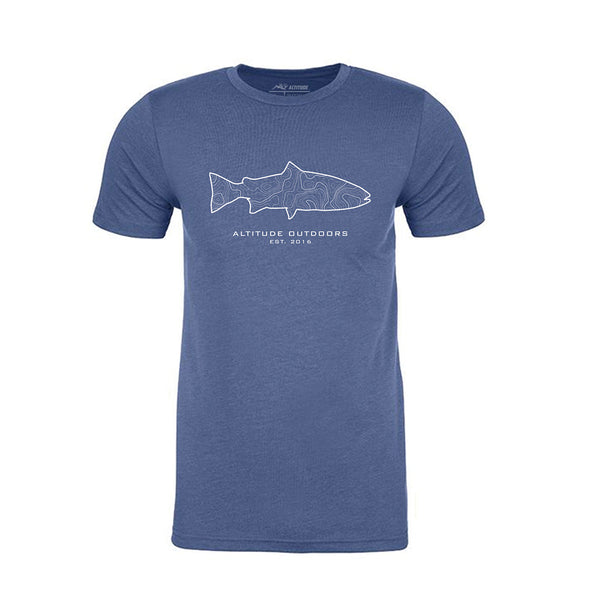
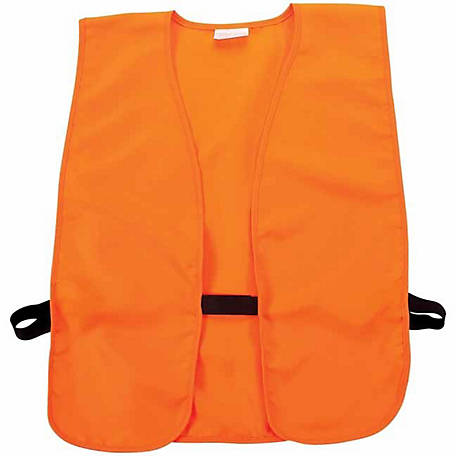
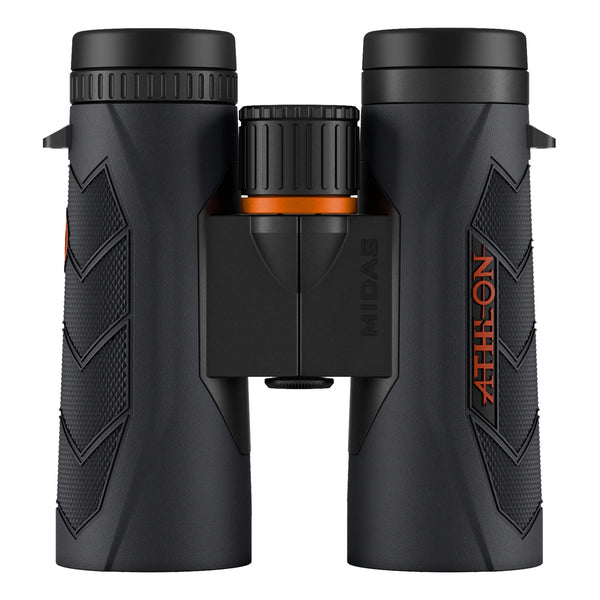
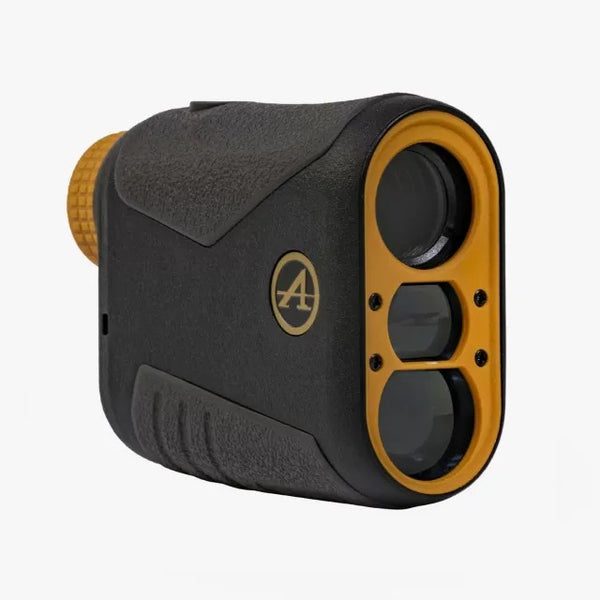
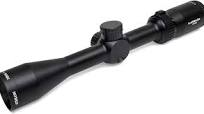
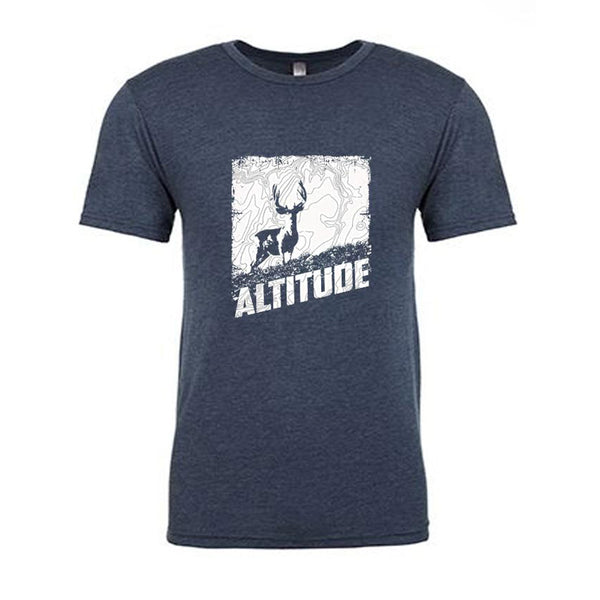







Leave a comment